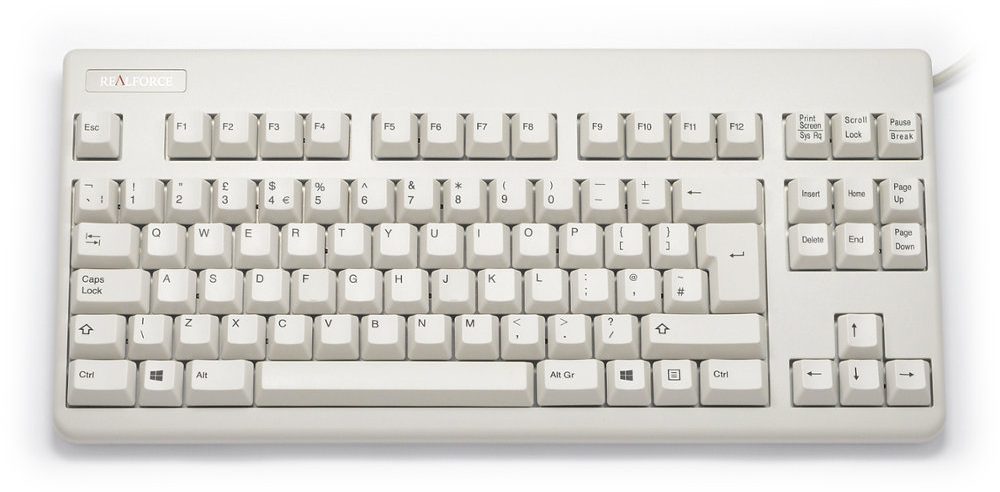
I have also looked through amazon and ebay and if there is an entry for US ANSI layout then they don't ship to Poland. I was really looking forward to using MX Keys but unfortunatelly I cannot accept US ISO layout while working in my country where any other keyboard (including Logitech keyboards, laptops etc.) is.
On some mechanical keyboard forums recently, I've noticed that some people are asking for ISO keyboards or ANSI keyboards. We did some research, and in this article, we'll tell you all about what we learned. What are the differences between ANSI and ISO layouts on mechanical keyboards?
Select a language that you want to add a keyboard layout to. Click the Options button under it. On the following screen, scroll down to the Keyboards section and click the plus button. You will see a long list of keyboards that you can add. On an ISO layout, the backslash is closer, but this poses a problem such as the Enter key being farther away from the home row. Your hands are commonly on the home row. In ANSI, with your pinky on the; key, you only have to reach over one other key to press Enter. On the ISO layout, your pinky must jump over two keys. Visual layouts vary by language, country, and user preference, and any one physical and functional layout can be employed with a number of different visual layouts. For example, the 'ISO' keyboard layout is used throughout Europe, but typical French, German, and UK variants of physically identical keyboards appear different because they bear.
The acronyms, ANSI and ISO, stand for two different world's standards organizations. ANSI stands for the American National Standards Institute, and ISO stands for the International Organization for Standardization. These are both keyboard layouts that describe the size and position of the keys. These are different than the logical layouts such as QWERTY, Colemak, Dvorak, etc. ANSI and ISO keyboards differ in the size and orientation of the Enter key, Backslash, and Left Shift keys.
Many mechanical keyboard users say that the keyboard layout really depends on the user, but there are benefits and disadvantages to using either layout.

I have also looked through amazon and ebay and if there is an entry for US ANSI layout then they don't ship to Poland. I was really looking forward to using MX Keys but unfortunatelly I cannot accept US ISO layout while working in my country where any other keyboard (including Logitech keyboards, laptops etc.) is.
On some mechanical keyboard forums recently, I've noticed that some people are asking for ISO keyboards or ANSI keyboards. We did some research, and in this article, we'll tell you all about what we learned. What are the differences between ANSI and ISO layouts on mechanical keyboards?
Select a language that you want to add a keyboard layout to. Click the Options button under it. On the following screen, scroll down to the Keyboards section and click the plus button. You will see a long list of keyboards that you can add. On an ISO layout, the backslash is closer, but this poses a problem such as the Enter key being farther away from the home row. Your hands are commonly on the home row. In ANSI, with your pinky on the; key, you only have to reach over one other key to press Enter. On the ISO layout, your pinky must jump over two keys. Visual layouts vary by language, country, and user preference, and any one physical and functional layout can be employed with a number of different visual layouts. For example, the 'ISO' keyboard layout is used throughout Europe, but typical French, German, and UK variants of physically identical keyboards appear different because they bear.
The acronyms, ANSI and ISO, stand for two different world's standards organizations. ANSI stands for the American National Standards Institute, and ISO stands for the International Organization for Standardization. These are both keyboard layouts that describe the size and position of the keys. These are different than the logical layouts such as QWERTY, Colemak, Dvorak, etc. ANSI and ISO keyboards differ in the size and orientation of the Enter key, Backslash, and Left Shift keys.
Many mechanical keyboard users say that the keyboard layout really depends on the user, but there are benefits and disadvantages to using either layout.
ANSI vs ISO Layout
The Alt Graph key is available on ISO keyboards and allows the user to access the third symbol on a key. This is common in other languages. If there is a fourth symbol on the key, this is accessed by pressing Shift and Alt Gr.
The one-key difference between the ANSI and ISO layouts exists in the left shift key. In ANSI keyboards, the left shift key is one large wide rectangular key. In ISO layouts, this shift key is broken into 2 different keys, making up that one key difference. Typically, this extra key will be the <> key.
In fully programmable keyboards, that extra button is what you make of it. It just allows you to fit another extra key. Perhaps in a different language, it could be a symbol or something else.
Disadvantages of an ISO Layout
The Enter Key is Far Away
On an ISO layout, the backslash is closer, but this poses a problem such as the Enter key being farther away from the home row. Your hands are commonly on the home row. In ANSI, with your pinky on the ; key, you only have to reach over one other key to press Enter. On the ISO layout, your pinky must jump over two keys. This is a problem of ergonomics since this is a frequently used key.
Does the Backslash Matter That Much?
So now the backslash is closer, but daily, that key is rarely used. I have only ever used it when doing programming when typing file paths in the Command Prompt or terminal window.
With the Enter key, we use that on a regular basis, every time we start a new line when typing in a document. Or when we're typing something in a search bar on Google or YouTube, we press that Enter key quick.
The Left Shift is Far Away
The Left shift is split into two keys, which results in the left shift key being about 1' away from its typical position. The extra key could be greater/less than symbols or backslash, depending on the language. These are not common keys. When I type and press my left shift, I press the right side. If I w as using an ISO keyboard, I would be accidentally pressing that extra key very often.
Many people who come from countries that use an ISO layout often opt for an ANSI keyboard because they find themselves accidentally pressing that key of the backslash all too often when trying to press something else.
Which is better: ANSI or ISO?
The answer boils down to preference. As we can see from the above, there are many disadvantages to using an ISO layout keyboard. There are some languages that cannot be used without an ISO keyboard, typically in certain European countries. ISO keyboards make sacrifices in ergonomics to fit in an extra key that would be needed for that language.
In fully programmable keyboards, getting an ANSI keyboard and then reprogramming it to fit all the keys needed for your language would be the most optimal.
Alongside being more ergonomic, you also get access to so many more options for PCBs, keycap sets, and more. Many group buys that offer ISO layouts do not hit the minimum funding needed to manufacture and distribute them. A quick Google search for ISO keycaps shows minimal results.
Often, even if the group buy minimum limit is hit, the ISO keycap sets tend to be more expensive.
Frequently Asked Related Questions
What is the JIS layout?
The JIS layout is the Japanese Standard layout for their keys. The JIS layout uses the upside-down L-shaped Enter key, splits the right shift into two keys, splits the backspace key into two keys, and adds 3 more keys within the spacebar space. Altogether, the JIS layout has 5 additional keys when compared to the ANSI layout, totaling 109 keys. These extra keys are needed for Japanese character inputs.
Spanish Iso Keyboard
Can I still use an ANSI keyboard even if my language uses an ISO layout?
It is possible to use an ANSI keyboard with languages that need the additional symbols and keys due to the programmability of mechanical keyboards. The ANSI keyboard has better positioning of its symbols and frequently used keys. To go into other layouts, it's possible to use Alt + Shift and then press the key with the symbol you need.
Where can I find places that sell ISO keycap sets?
Run osx on pc. A good place that sells ISO keycaps is at CandyKeys. They offer many different sets in different colors. It's not much compared to the vast variety of ANSI keycaps, but it's a good place to start.
Drop also sometimes have ISO keycaps for group buys. Currently, there are none available, but they previously have had them.
KBD Fans currently has 8 sets of keycaps that fit the ISO layout. They offer dye-sublimated Cherry profile keycaps, blank keycaps for a 65% and 60% keyboard, and the extra keys as a small standalone purchase if you buy ANSI keycap kits and then just replace those specific keys.
Where can I find ANSI keycap sets?
ANSI keycaps can be found pretty much everywhere. It's unnecessary to type ANSI when looking for these keycaps, just searching for keycaps will give you these results as the default. Some good places to find keycaps is at Kono, Candykeys, KBD Fans, and Mechanicalkeyboards.com.
Us Iso Keyboard Layout Software
Summary
We talked about the differences between the ANSI layout and the ISO layout as well as presented the many disadvantages of the ISO layout. It's not as ergonomic and makes little sense when typing unless you type a language that absolutely needs the extra key. We also discussed different places to buy ISO and ANSI keycaps.
Hopefully, this article helped you. I found it cool. I had no idea that the ISO layout was a thing. At first though, I thought it was better because it fit an extra key, but now I think my keyboard is fine for me.
Us Vs Iso Keyboard
As always, happy typing!
Us Iso Keyboard Layout Pdf
What kind of keyboard layout do you have, and what do you think of it? Leave it in the comments down below.
